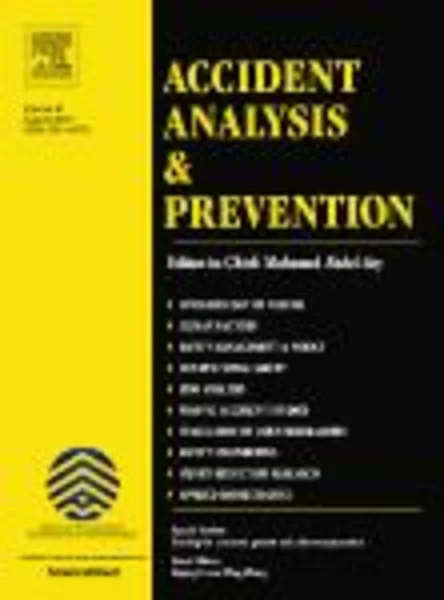-
age and years in practice as factors associated with needlestick and sharps injuries among health care workers in a portuguese hospital
جزئیات بیشتر مقاله- تاریخ ارائه: 1392/01/01
- تاریخ انتشار در تی پی بین: 1392/01/01
- تعداد بازدید: 1002
- تعداد پرسش و پاسخ ها: 0
- شماره تماس دبیرخانه رویداد: -
health care workers are attributed to the group at highest risk of occupationally acquired bloodborne diseases as the result of contact with blood and body fluids. a cross sectional study was conducted between november 2009 and february 2010 in the north of portugal, to identify potential risk factors for needlestick and sharps injuries. a questionnaire was provided to 363 health care professionals. logistic regression was used to identify risk factors associated to needlestick and sharps injuries, calculating odds ratio (or) and their 95% confidence interval (ci). sixty-five percent of health care workers (64.5%, 234/363) reported needlestick and sharps injuries in the previous 5 years. of the injured workers, 74.8% were nurses. of the total injuries reported, the commonest were from syringe needle unit. the multivariate logistic regression model showed that the strongest risk factor was having more than 10 years or more of work in health services (or 3.37, 95% ci 1.82, 6.24). another significantly related factor was being over 39 years-old (or 1.94, 95% ci 1.03, 3.63). in portugal, there is a lack of epidemiological evidence related to needlestick and sharps injuries. considering that patients infected with hepatitis b and c virus are commonly encountered in the hospital environment and that the prevalence of hiv infection in portugal is one of the highest in europe, these results should be considered in the design of biosafety strategies at the hospital center.
مقالات جدیدترین رویدادها
-
استفاده از تحلیل اهمیت-عملکرد در ارائه الگوی مدیریت خلاقیت سازمانی و ارائه راهکار جهت بهبود
-
بررسی تاثیر ارزش وجوه نقد مازاد بر ساختار سرمایه شرکت های پذیرفته شده در بورس اوراق بهادار تهران
-
بررسی تأثیر سطح افشای ریسک بر قرارداد بدهی شرکت های پذیرفته شده در بورس اوراق بهادار تهران
-
بررسی تأثیر رتبه بندی اعتباری مبتنی بر مدل امتیاز بازار نوظهور بر نقد شوندگی سهام با تأکید بر خصوصی سازی شرکت ها
-
تأثیر آمیخته بازاریابی پوشاک ایرانی بر تصویر ذهنی مشتری پوشاک ایرانی (هاکوپیان)
-
مروری بر تحقیق اثرات سرباره دانه ای دم کوره گرانول (gbs) در رفتارمهندسی تثبیت خاک نرم
-
عملکرد لرزه ای کاربرد میراگرهای اضافی در کنار جداگرهای لاستیکی –سربی در ساختمان های فولادی با مهاربند همگرا
-
ارزیابی میزان اثربخشی طرح تدریس مشارکتی در مدارس دوره ی سوم ابتدایی استان چهارمحال و بختیاری
-
influence of photolithography on the cross-sectional shape of polysiloxane as an optical waveguide material on printed circuit boards
-
assessment of polyethylenepipelinesunder landslide
مقالات جدیدترین ژورنال ها
-
مدیریت و بررسی افسردگی دانش آموزان دختر مقطع متوسطه دوم در دروان کرونا در شهرستان دزفول
-
مدیریت و بررسی خرد سیاسی در اندیشه ی فردوسی در ادب ایران
-
واکاوی و مدیریت توصیفی قلمدان(جاکلیدی)ضریح در موزه آستان قدس رضوی
-
بررسی تاثیر خلاقیت، دانش و انگیزه کارکنان بر پیشنهادات نوآورانه کارکنان ( مورد مطالعه: هتل های 3 و 4 ستاره استان کرمان)
-
بررسی تاثیر کیفیت سیستم های اطلاعاتی بر تصمیم گیری موفق در شرکتهای تولیدی استان اصفهان (مورد مطالعه: مدیران شرکتهای تولیدی استان اصفهان)
-
تاثیر ابعاد نظریه حضور اجتماعی و حمایت اجتماعی بر اعتماد به تجارت الکترونیکی (مورد مطالعه: کاربران تجارت اجتماعی با تجربه خرید آنلاین)
-
بررسی نقش میانجی گری ادراک از محیط کلاس در رابطه بین اهداف پیشرفت و خودکارآمدی تحصیلی با درگیری تحصیلی
-
بررسی و تحلیل اصول و منابع فقهی حقوق عمومی در حکومت و اسلام
-
آسیب شناسی خصوصی سازی آموزش عالی در ایران
-
adherence to the treatment of patients after coronary artery bypass graft surgery




سوال خود را در مورد این مقاله مطرح نمایید :